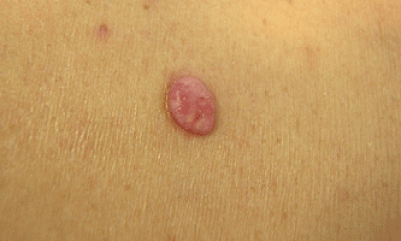Amelanotic melanoma is a particular type of melanoma that is distinguished by its lack of melanin, the pigment that gives color to the skin and moles. This type of melanoma can appear as a nodule or papular or nodular lesion on skin that is devoid of pigment and is pink, red, purple, white, or normal skin color.

Due to the lack of pigmentation, this type of melanoma can be more difficult to recognize and diagnose than other forms of melanoma. However, dermatoscopy can be used to evaluate such lesions, often by detecting residual pigmentation at the edges of the lesion. In addition, dermatoscopy sometimes shows abnormal vascular structures such as meandering, glomerular, irregular hairpin, and corkscrew capillaries, which may provide additional clues to the diagnosis.
Amelanotic melanoma can develop anywhere on the body, and as with other types of melanoma, it can experience changes over time, such as increasing in size, changing shape, or developing a bumpy border. Some amelanotic melanomas may also have ulcers or bleeding.
Although amelanotic melanoma is less common than other forms of melanoma, its incidence rate is increasing. This may be due in part to the difficulty in recognizing and diagnosing it early, due to its lack of characteristic pigmentation.
Treatment of amelanotic melanoma is similar to that of other types of melanoma and may include surgery, radiation therapy, immunotherapy, targeted therapy, or a combination of these. As with all melanomas, the prognosis for amelanotic melanoma depends on various factors, including the stage of the cancer at the time of diagnosis and the patient’s age and general health.
Given how difficult this type of melanoma is to detect, it’s crucial for people to do regular skin self-exams and see a doctor or dermatologist if they notice any unusual changes.